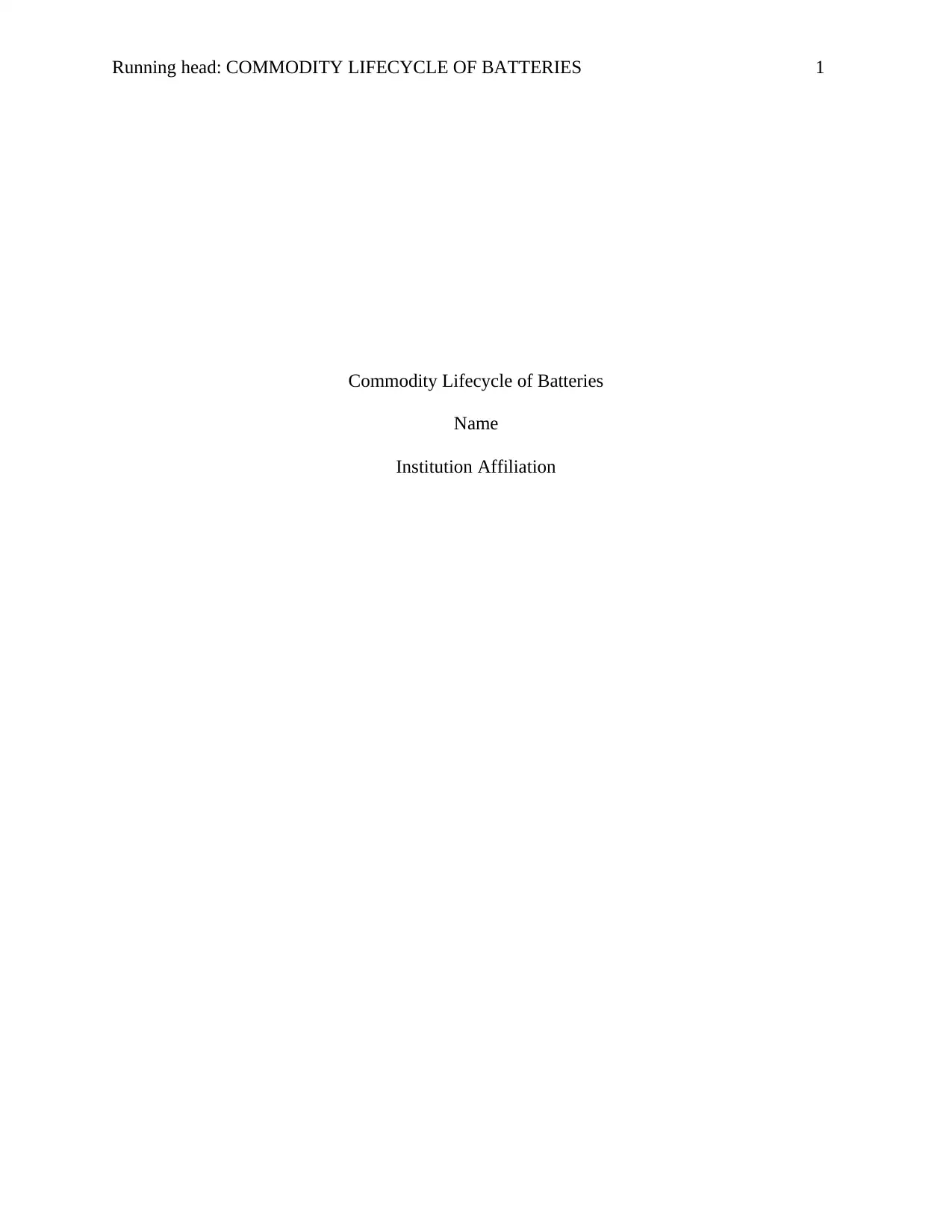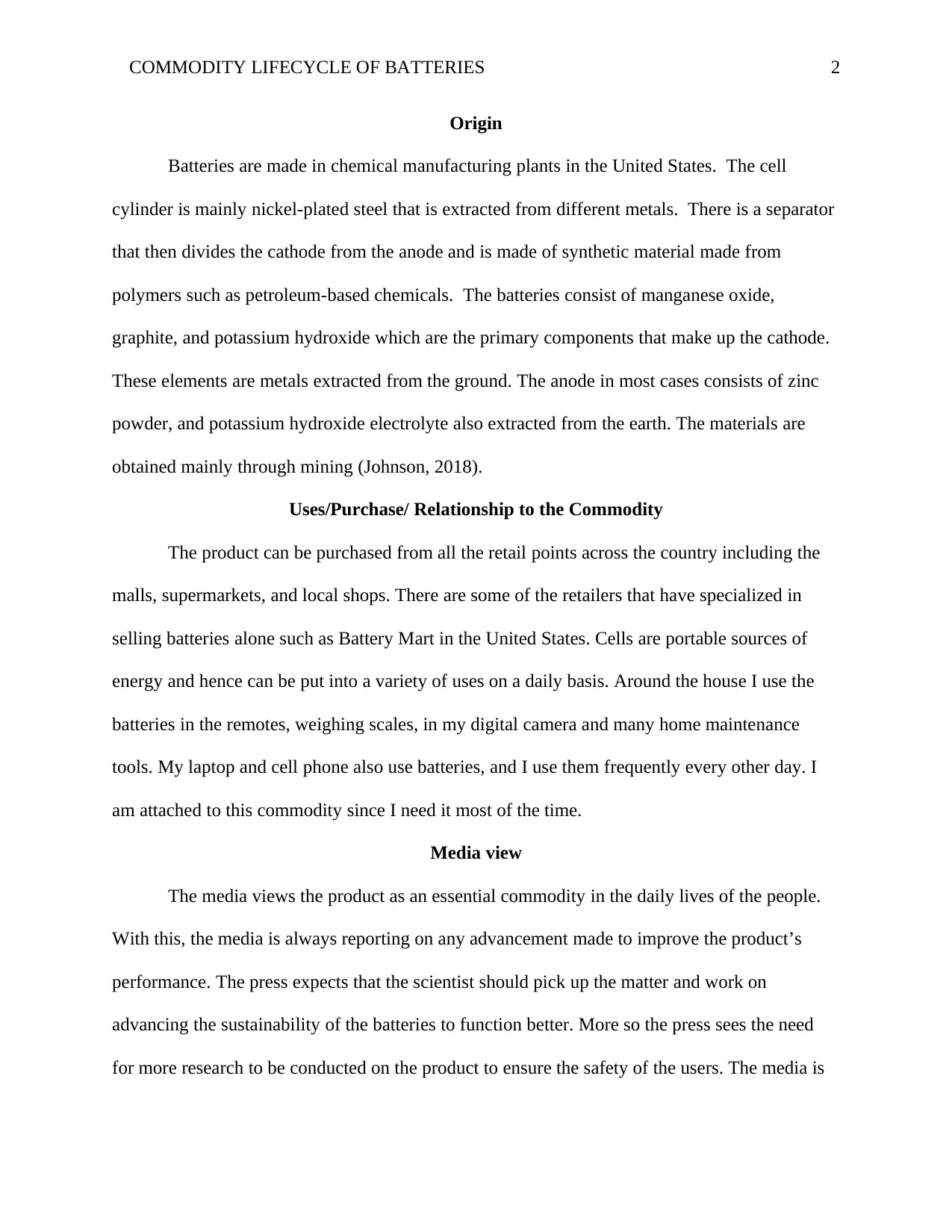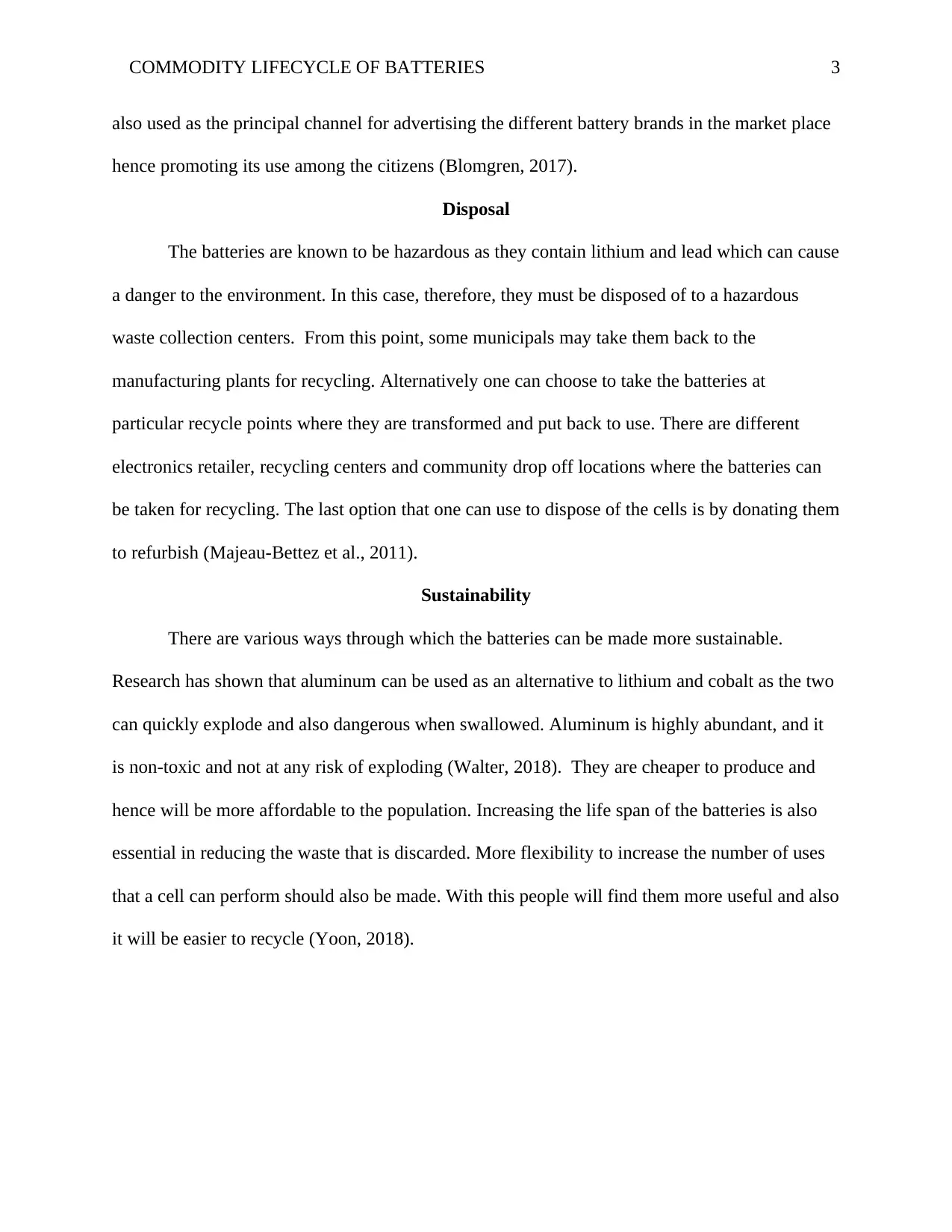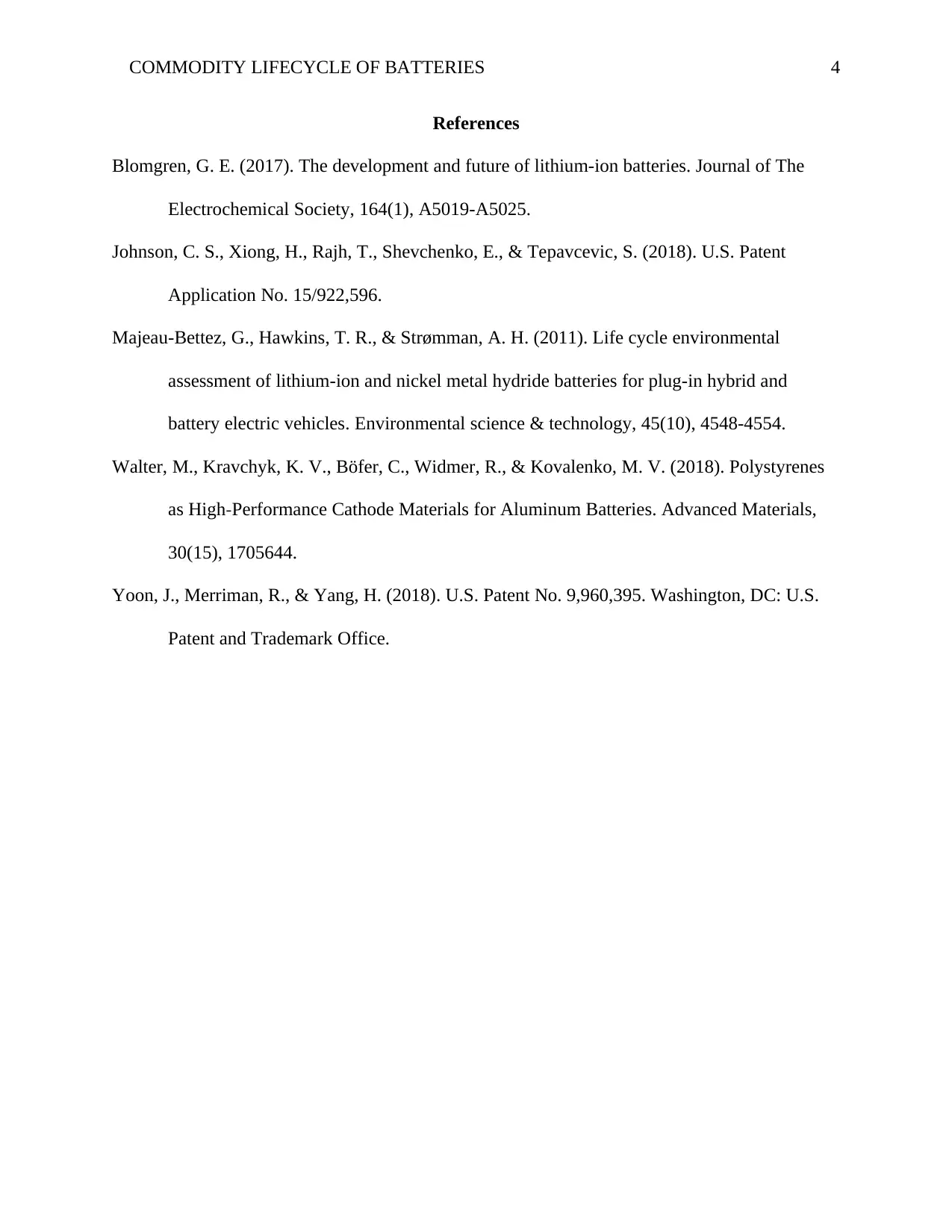Environmental Science Report: Battery Commodity Lifecycle Analysis
VerifiedAdded on 2021/02/24
|4
|838
|76
Report
AI Summary
This report provides a comprehensive analysis of the commodity lifecycle of batteries, beginning with their origin in chemical manufacturing plants and the extraction of raw materials like nickel-plated steel, manganese oxide, and zinc. It explores the various uses of batteries in everyday life, from household appliances to mobile devices, emphasizing their essential role in modern society. The report also examines media perspectives on batteries, particularly regarding advancements and sustainability. It then details the hazardous nature of battery disposal, including the presence of lithium and lead, and the necessity for proper disposal through hazardous waste collection centers or recycling programs. Finally, it discusses sustainability measures, such as the potential use of aluminum as an alternative to lithium and cobalt, increasing battery lifespan, and expanding their usability to reduce waste and promote recyclability. The report references several studies and patents to support its findings.
1 out of 4








![[object Object]](/_next/static/media/star-bottom.7253800d.svg)